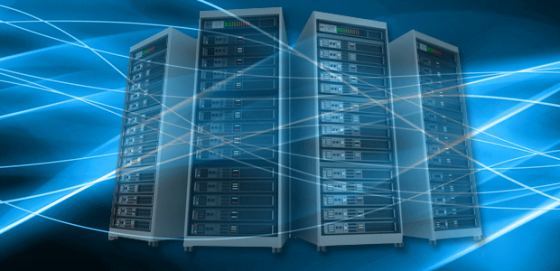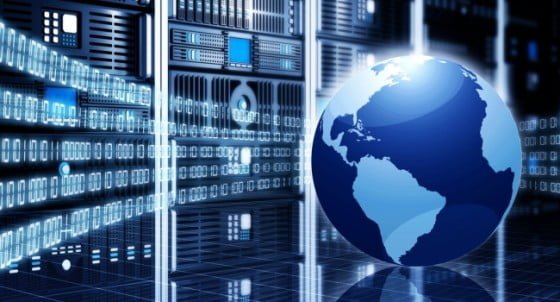What Is Data Center?
In a typical data center, electrical energy is used to operate Information and Communication Technology (ICT) equipment and its supporting facilities. About 45% of electrical energy is consumed by ICT equipment, which includes servers, storages, and networks. The other 55% of electrical energy is consumed by facilities, which include power distribution system, uninterruptible power supplies, chillers, computer room air conditioners, lights, and so on. Improving power consumption by ICT equipment and facilities is imperative for efficient use of energy. Many studies have proven increasing greenhouse gases due to human activities resulting in global warming. Before talking about the data center management, let’s take a look at the Introduction to Data Center.
Data Centers and Global Warming
Human beings generate all kinds of heat from cooking food, manufacturing goods, building houses, passenger and freight transport, and ICT activities. ICT continues as a pervasive force in the global economy, which includes Internet surfing, computing, online purchase, online banking, mobile phone, social networking, medical services, and exascale machine (supercomputer). They all require energy in data centers and give out heat as a result. One watt input to process data results in 1 W of heat output. As a result, all data centers take energy and give out heat. We can’t stop giving out heat, but we can reduce heat output by efficiently managing energy input.
Data Center Definition
The term “data center” means differently to different people. Some of the names used include data center, data hall, data farm, data warehouse, computer room, server room, R&D software lab, high-performance lab, hosting facility, colocation, and so on. The U.S. Environment Protection Agency defines a data center as:
- “Primarily electronic equipment used for data processing (servers), data storage (storage equipment), and communications (network equipment). Collectively, this equipment processes, stores, and transmits digital information.”
- “Specialized power conversion and backup equipment to maintain reliable, high-quality power, as well as environmental control equipment to maintain the proper temperature and humidity for the ICT equipment.”
Data centers are involved in every aspect of life running Amazon, AT&T, CIA, Citibank, Disneyworld, eBay, FAA, Facebook, FEMA, FBI, Harvard University, IBM, Mayo Clinic, NASA, NASDAQ, State Farm, U.S. Government, Twitter, Walmart, Yahoo, Zillow, etc. This A–Z list reflects the “basic needs” of food, clothing, shelter, transportation, health care, and social activities that cover the relationships among individuals within a society. A data center could consume electrical power from 1 to over 500 MW. Regardless of size and purpose, all data centers serve one purpose, and that is to process information.
Energy Consumption Trends and Using Electricity Efficiently
As a result of increasing activities such as big data analytics, online services, mobile broadband, social activities, commercial business, manufacturing business, health care, education, medicine, science, and engineering, energy demand will continue to increase. A data center houses ICT equipment and facilities that are used to cool ICT equipment. While air cooling is still the most economical way to cool servers in racks, water cooling is the most efficient way to remove heat generated by processors.
Opportunities of saving energy at the server level include the use of ENERGY STAR-rated equipment, water cooling server, solid-state drive, and variable-speed fan in servers. Virtualization could be applied to improve the server’s utilization efficiency.
Different Types of Data Centers
 Virtualization Data Center. Virtualization is a method of running multiple independent virtual operating systems on a single physical computer. It is a way of allowing the same amount of processing to occur on fewer servers by increasing server utilization. Instead of operating many servers at low CPU utilization, virtualization combines the processing power onto fewer servers that operate at higher utilization.
Virtualization Data Center. Virtualization is a method of running multiple independent virtual operating systems on a single physical computer. It is a way of allowing the same amount of processing to occur on fewer servers by increasing server utilization. Instead of operating many servers at low CPU utilization, virtualization combines the processing power onto fewer servers that operate at higher utilization. Cloud Computing Data Center. Cloud computing is an evolving model. It is characterized as easy access, on demand, rapidly adaptable, flexible, cost-effective, and self-service to share pool of computing resources that include servers, storage, networks, applications, and services. Cloud capacity could be rapidly provisioned, controlled, and measured. Cloud computing provides various service models including Software as a Service (SaaS), Infrastructure as a Service (IaaS), and Platform as a Service (PaaS). HP’s “Everything as a Service” provides service model as follows: “Through the cloud, everything will be delivered as a service, from computing power to business processes to personal interactions.” Cloud computing is being deployed in public, private, community, or hybrid cloud models. It benefits data center managers by offering resource pooling and optimizing resource uses with lower costs. IDC estimate that by 2015, 20% of the information will be “touched” by cloud computing.
Cloud Computing Data Center. Cloud computing is an evolving model. It is characterized as easy access, on demand, rapidly adaptable, flexible, cost-effective, and self-service to share pool of computing resources that include servers, storage, networks, applications, and services. Cloud capacity could be rapidly provisioned, controlled, and measured. Cloud computing provides various service models including Software as a Service (SaaS), Infrastructure as a Service (IaaS), and Platform as a Service (PaaS). HP’s “Everything as a Service” provides service model as follows: “Through the cloud, everything will be delivered as a service, from computing power to business processes to personal interactions.” Cloud computing is being deployed in public, private, community, or hybrid cloud models. It benefits data center managers by offering resource pooling and optimizing resource uses with lower costs. IDC estimate that by 2015, 20% of the information will be “touched” by cloud computing. Software-Defined Data Center. The Software-Defined Data Center (SDDC), pioneered by VMware, is an architectural approach that has all ICT infrastructure (server, storage, networking, and security) virtualized through hardware-independent management system. SDDC can be a building block to Cloud, or Cloud can be an extension of an SDDC. Virtual machines can be deployed in minutes with little human involvement. Provisioning applications can be operational in minutes that shorten time to value. SDDC maximizes the utilization of physical infrastructure. As a result, SDDC reduces capital spending, advances asset utilization, improves operational efficiency, and enhances ICT productivity. SDDC is likely to drive down data center hardware costs.
Software-Defined Data Center. The Software-Defined Data Center (SDDC), pioneered by VMware, is an architectural approach that has all ICT infrastructure (server, storage, networking, and security) virtualized through hardware-independent management system. SDDC can be a building block to Cloud, or Cloud can be an extension of an SDDC. Virtual machines can be deployed in minutes with little human involvement. Provisioning applications can be operational in minutes that shorten time to value. SDDC maximizes the utilization of physical infrastructure. As a result, SDDC reduces capital spending, advances asset utilization, improves operational efficiency, and enhances ICT productivity. SDDC is likely to drive down data center hardware costs.
